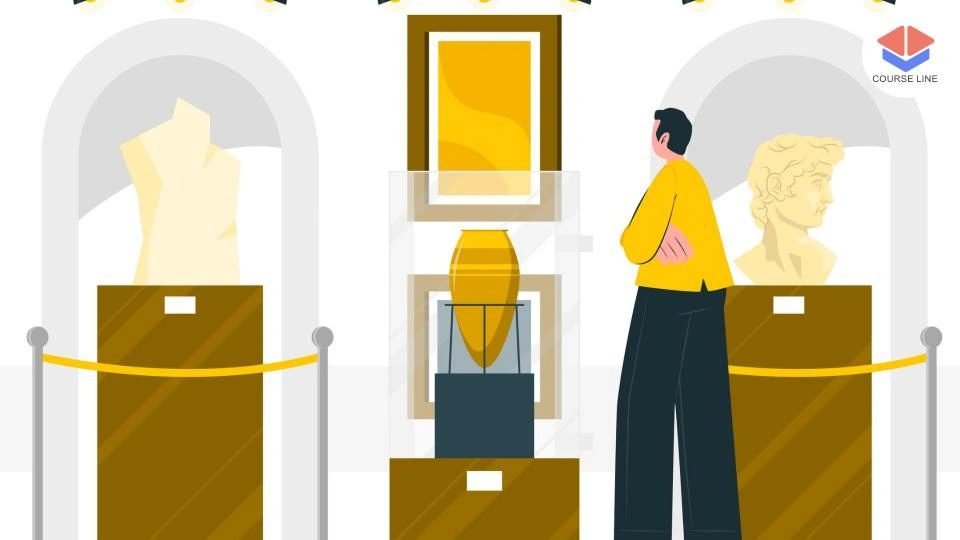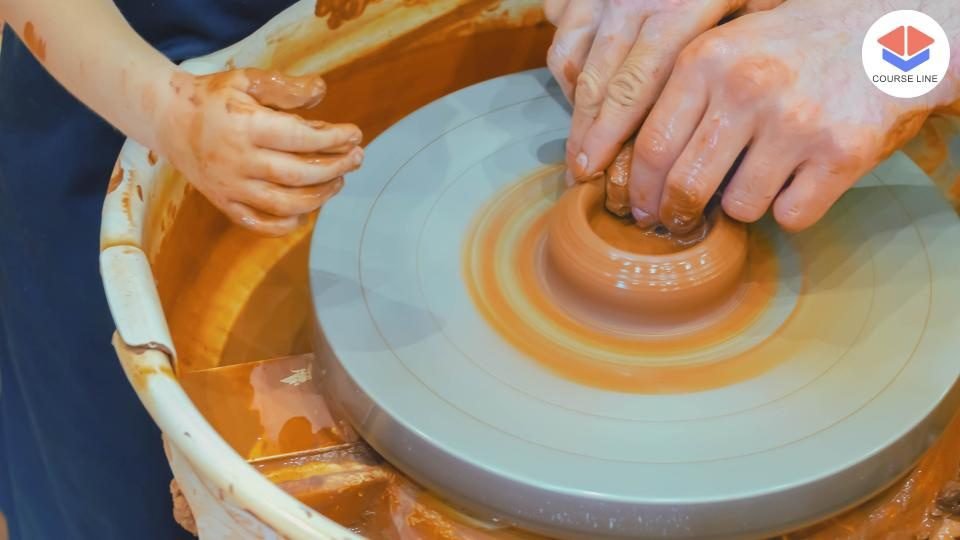Course Features
Price
Study Method
Online | Self-paced
Course Format
Reading Material - PDF, article
Duration
6 hours, 35 minutes
Qualification
No formal qualification
Certificate
At completion
Additional info
Coming soon
- Share
Overview
The History of Art Level 3 Advanced Diploma provides students with a thorough understanding of the development of art from its earliest forms in prehistoric times to the vibrant and diverse art movements of the 20th and 21st centuries. The course begins with an exploration of prehistoric and ancient art, including the Palaeolithic cave paintings, ancient Egyptian art and architecture, and the classical art of Greece and Rome. Students will learn about the artistic achievements of Mesopotamian and Persian civilizations, setting the foundation for understanding how early cultures used art to express their values, beliefs, and identities.
As the course progresses, students will delve into medieval and Renaissance art, studying the Byzantine and Islamic influences on art, as well as the Romanesque and Gothic styles. The Italian Renaissance, marked by the works of artists like Leonardo da Vinci, Michelangelo, and Raphael, is examined in detail, alongside the Northern Renaissance, which introduced its own distinct characteristics. The course also covers the Baroque and Rococo periods, analyzing the dramatic, ornate styles of these movements and their prominent artists in Italy, Spain, the Netherlands, and beyond.
In the 19th century, the course explores the shift from Neoclassicism and Romanticism to Realism and Impressionism, followed by the innovations of Post-Impressionism and Symbolism. Moving into the 20th century, students will study the radical transformations of modern art, from Fauvism and Expressionism to the revolutionary styles of Cubism and Futurism. The course examines the rise of Abstract art, Dadaism, Surrealism, and the influence of Sigmund Freud on the visual arts, as well as the impact of Pop art, Minimalism, and Conceptual art. Contemporary art and new media are also explored, providing students with an understanding of the current landscape of the art world.
The course also examines the art of the Americas, Africa, and Asia, shedding light on Native American, African, and Asian art traditions and their profound influence on Western art. Students will learn about art as social commentary, activism, and its role in reflecting gender and identity. Art criticism and interpretation are key topics, encouraging students to critically analyze artwork from multiple perspectives, while also exploring the ethical considerations of art conservation and restoration. The course concludes with case studies of notable art restoration projects, allowing students to understand the challenges and importance of preserving cultural heritage.
Who is this course for?
The History of Art Level 3 Advanced Diploma provides students with a thorough understanding of the development of art from its earliest forms in prehistoric times to the vibrant and diverse art movements of the 20th and 21st centuries. The course begins with an exploration of prehistoric and ancient art, including the Palaeolithic cave paintings, ancient Egyptian art and architecture, and the classical art of Greece and Rome. Students will learn about the artistic achievements of Mesopotamian and Persian civilizations, setting the foundation for understanding how early cultures used art to express their values, beliefs, and identities.
As the course progresses, students will delve into medieval and Renaissance art, studying the Byzantine and Islamic influences on art, as well as the Romanesque and Gothic styles. The Italian Renaissance, marked by the works of artists like Leonardo da Vinci, Michelangelo, and Raphael, is examined in detail, alongside the Northern Renaissance, which introduced its own distinct characteristics. The course also covers the Baroque and Rococo periods, analyzing the dramatic, ornate styles of these movements and their prominent artists in Italy, Spain, the Netherlands, and beyond.
In the 19th century, the course explores the shift from Neoclassicism and Romanticism to Realism and Impressionism, followed by the innovations of Post-Impressionism and Symbolism. Moving into the 20th century, students will study the radical transformations of modern art, from Fauvism and Expressionism to the revolutionary styles of Cubism and Futurism. The course examines the rise of Abstract art, Dadaism, Surrealism, and the influence of Sigmund Freud on the visual arts, as well as the impact of Pop art, Minimalism, and Conceptual art. Contemporary art and new media are also explored, providing students with an understanding of the current landscape of the art world.
The course also examines the art of the Americas, Africa, and Asia, shedding light on Native American, African, and Asian art traditions and their profound influence on Western art. Students will learn about art as social commentary, activism, and its role in reflecting gender and identity. Art criticism and interpretation are key topics, encouraging students to critically analyze artwork from multiple perspectives, while also exploring the ethical considerations of art conservation and restoration. The course concludes with case studies of notable art restoration projects, allowing students to understand the challenges and importance of preserving cultural heritage.
Requirements
The History of Art Level 3 Advanced Diploma provides students with a thorough understanding of the development of art from its earliest forms in prehistoric times to the vibrant and diverse art movements of the 20th and 21st centuries. The course begins with an exploration of prehistoric and ancient art, including the Palaeolithic cave paintings, ancient Egyptian art and architecture, and the classical art of Greece and Rome. Students will learn about the artistic achievements of Mesopotamian and Persian civilizations, setting the foundation for understanding how early cultures used art to express their values, beliefs, and identities.
As the course progresses, students will delve into medieval and Renaissance art, studying the Byzantine and Islamic influences on art, as well as the Romanesque and Gothic styles. The Italian Renaissance, marked by the works of artists like Leonardo da Vinci, Michelangelo, and Raphael, is examined in detail, alongside the Northern Renaissance, which introduced its own distinct characteristics. The course also covers the Baroque and Rococo periods, analyzing the dramatic, ornate styles of these movements and their prominent artists in Italy, Spain, the Netherlands, and beyond.
In the 19th century, the course explores the shift from Neoclassicism and Romanticism to Realism and Impressionism, followed by the innovations of Post-Impressionism and Symbolism. Moving into the 20th century, students will study the radical transformations of modern art, from Fauvism and Expressionism to the revolutionary styles of Cubism and Futurism. The course examines the rise of Abstract art, Dadaism, Surrealism, and the influence of Sigmund Freud on the visual arts, as well as the impact of Pop art, Minimalism, and Conceptual art. Contemporary art and new media are also explored, providing students with an understanding of the current landscape of the art world.
The course also examines the art of the Americas, Africa, and Asia, shedding light on Native American, African, and Asian art traditions and their profound influence on Western art. Students will learn about art as social commentary, activism, and its role in reflecting gender and identity. Art criticism and interpretation are key topics, encouraging students to critically analyze artwork from multiple perspectives, while also exploring the ethical considerations of art conservation and restoration. The course concludes with case studies of notable art restoration projects, allowing students to understand the challenges and importance of preserving cultural heritage.
Career path
The History of Art Level 3 Advanced Diploma provides students with a thorough understanding of the development of art from its earliest forms in prehistoric times to the vibrant and diverse art movements of the 20th and 21st centuries. The course begins with an exploration of prehistoric and ancient art, including the Palaeolithic cave paintings, ancient Egyptian art and architecture, and the classical art of Greece and Rome. Students will learn about the artistic achievements of Mesopotamian and Persian civilizations, setting the foundation for understanding how early cultures used art to express their values, beliefs, and identities.
As the course progresses, students will delve into medieval and Renaissance art, studying the Byzantine and Islamic influences on art, as well as the Romanesque and Gothic styles. The Italian Renaissance, marked by the works of artists like Leonardo da Vinci, Michelangelo, and Raphael, is examined in detail, alongside the Northern Renaissance, which introduced its own distinct characteristics. The course also covers the Baroque and Rococo periods, analyzing the dramatic, ornate styles of these movements and their prominent artists in Italy, Spain, the Netherlands, and beyond.
In the 19th century, the course explores the shift from Neoclassicism and Romanticism to Realism and Impressionism, followed by the innovations of Post-Impressionism and Symbolism. Moving into the 20th century, students will study the radical transformations of modern art, from Fauvism and Expressionism to the revolutionary styles of Cubism and Futurism. The course examines the rise of Abstract art, Dadaism, Surrealism, and the influence of Sigmund Freud on the visual arts, as well as the impact of Pop art, Minimalism, and Conceptual art. Contemporary art and new media are also explored, providing students with an understanding of the current landscape of the art world.
The course also examines the art of the Americas, Africa, and Asia, shedding light on Native American, African, and Asian art traditions and their profound influence on Western art. Students will learn about art as social commentary, activism, and its role in reflecting gender and identity. Art criticism and interpretation are key topics, encouraging students to critically analyze artwork from multiple perspectives, while also exploring the ethical considerations of art conservation and restoration. The course concludes with case studies of notable art restoration projects, allowing students to understand the challenges and importance of preserving cultural heritage.
-
- Palaeolithic art and cave paintings 00:10:00
- Ancient Egyptian art and architecture 00:10:00
- Classical Greek and Roman art 00:10:00
- Mesopotamian and Persian art 00:10:00
-
- Byzantine and Islamic art 00:10:00
- Romanesque and Gothic art 00:10:00
- Italian Renaissance art and its major figures 00:10:00
- Northern Renaissance art and its distinct characteristics 00:10:00
- Baroque art in Italy, Spain, and the Netherlands 00:10:00
- Rococo art and the rise of decorative arts 00:10:00
- Key artists of the Baroque and Rococo periods 00:10:00
- Fauvism and Expressionism 00:10:00
- Cubism and Futurism 00:10:00
- Abstract art and Dadaism 00:10:00
- Surrealism and the influence of Freud 00:10:00
- Pop art, Minimalism, and Conceptual art 00:10:00
- Contemporary art and new media 00:10:00
- Art as social commentary and activism 00:10:00
- Art and gender 00:10:00
- Art and identity 00:10:00
- Public art and its role in society 00:10:00
- Historical techniques and materials 00:10:00
- Preservation and restoration ethics 00:10:00
- Case studies of notable art restoration projects 00:10:00
- Premium Certificate 00:15:00

No Reviews found for this course.
Is this certificate recognized?
Yes, our premium certificate and transcript are widely recognized and accepted by embassies worldwide, particularly by the UK embassy. This adds credibility to your qualification and enhances its value for professional and academic purposes.
I am a beginner. Is this course suitable for me?
Yes, this course is designed for learners of all levels, including beginners. The content is structured to provide step-by-step guidance, ensuring that even those with no prior experience can follow along and gain valuable knowledge.
I am a professional. Is this course suitable for me?
Yes, professionals will also benefit from this course. It covers advanced concepts, practical applications, and industry insights that can help enhance existing skills and knowledge. Whether you are looking to refine your expertise or expand your qualifications, this course provides valuable learning.
Does this course have an expiry date?
No, you have lifetime access to the course. Once enrolled, you can revisit the materials at any time as long as the course remains available. Additionally, we regularly update our content to ensure it stays relevant and up to date.
How do I claim my free certificate?
I trust you’re in good health. Your free certificate can be located in the Achievement section. The option to purchase a CPD certificate is available but entirely optional, and you may choose to skip it. Please be aware that it’s crucial to click the “Complete” button to ensure the certificate is generated, as this process is entirely automated.
Does this course have assessments and assignments?
Yes, the course includes both assessments and assignments. Your final marks will be determined by a combination of 20% from assignments and 80% from assessments. These evaluations are designed to test your understanding and ensure you have grasped the key concepts effectively.
Is this course accredited?
We are a recognized course provider with CPD, UKRLP, and AOHT membership. The logos of these accreditation bodies will be featured on your premium certificate and transcript, ensuring credibility and professional recognition.
Will I receive a certificate upon completion?
Yes, you will receive a free digital certificate automatically once you complete the course. If you would like a premium CPD-accredited certificate, either in digital or physical format, you can upgrade for a small fee.
Course Features
Price
Study Method
Online | Self-paced
Course Format
Reading Material - PDF, article
Duration
6 hours, 35 minutes
Qualification
No formal qualification
Certificate
At completion
Additional info
Coming soon
- Share
Acoustic Engineering Level 3 Advanced Diploma
Course Line240€557.91Original price was: €557.91.€17.07Current price is: €17.07.Journalism Level 8 Advanced Diploma
Course Line240€557.91Original price was: €557.91.€17.07Current price is: €17.07.Ceramics Level 8 Advanced Diploma
Course Line239€557.91Original price was: €557.91.€17.07Current price is: €17.07.





